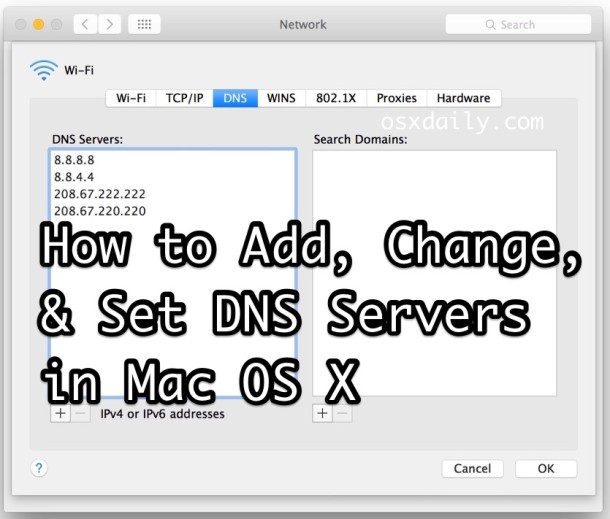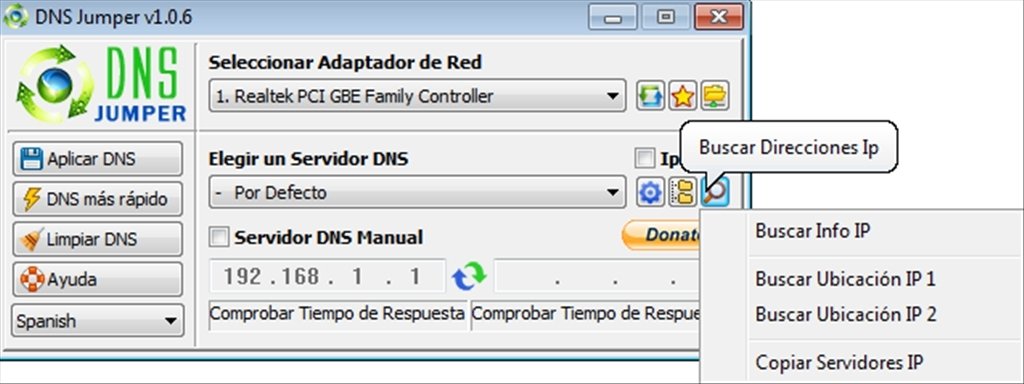If you've got a speedy internet connection at home, but it seems slow, it's possible its' not the connection itself but the speed of your chosen DNS server.
Dns Jumper Mac Os X 10.7
First, head into the System Preferences, then click on the Network icon. Then, select your network card on the left—in most cases, this will be Wi-Fi at the top of the list—and then click the Advanced button near the bottom right corner. Once you’re there, switch over to the DNS tab, and you can start adding in DNS entries into the list. To list the entries of DNS cache in OSX 10.11.6, I tried dscacheutil -statistics but that didn't work. I tried this under Mac OS X Sierra 10.12.2 and it doesn't. Config I have on a IOS device works perfectly on a Windows client, but on a Mac OS X 10.5 client it's not playing ball. In terminal, I can do a 'host' on a server that resides at the other end of the SSL VPN, but if I try and ping it, it's replying that the host is unknown.
To figure out if the DNS servers are part of the problem, check out namebench, a DNS server benchmarking app. namebench compares your existing DNS servers to a large list of other DNS servers, and shows you how they all perform.
When namebench launches, you'll see a window populated with your current DNS server addresses, and a few other settings you can modify:
Click Start, then go ahead and find something else to do for a while—the benchmarking process may take 15 minutes or more, depending on how many name servers it can see.

Dns Jumper Mac Os X 10.10
macOS High Sierra update:Dns Jumper Mac Os X 10.13
While the app still runs in High Sierra, you won't see any output. However, thanks to commenter Marc K., you can still see the output once it's done. Open Terminal and paste this command:
This will open the results page in your browser—including the below-referenced eye candy—so you can compare the various DNS that were analyzed. Thanks Marc!
Dns Jumper Mac Os X 10.8

After namebench has done its thing, your browser will open showing a page with results, including some 'eye candy' charts like this one...
The report may tell you your current DNS is the fastest, or it may have recommendations for other servers. Note: You may also see lots of scary messages about a DNS being hijacked; you really don't need to worry about these. (CHeck the FAQ for answers about hijacking, and anything else in the output).
namebench can also be built from source, so you could use it in Terminal, but I haven't tried that. It's not new code—the latest version (1.3.1) is from 2010. However, it seems to run fine in Sierra (and Mavericks before that). If you're curious about your DNS servers, I haven't found a better tool than namebench to investigate their performance.
Related Posts:

Comments are closed.